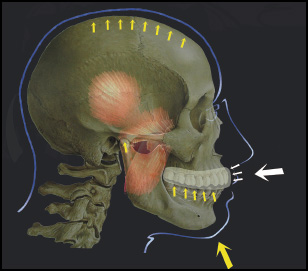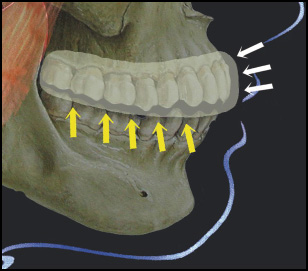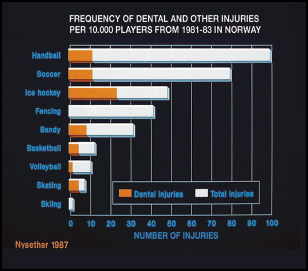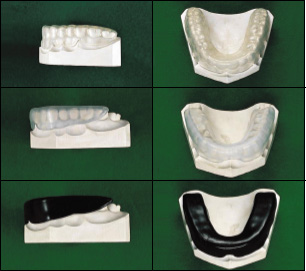Prevention of Traumatic Dental Injuries
OBJECTIVE
1 Identify medium- and high-risk sports.
2 Describe preventive measures.
3 Describe effects of prevention measures.

MECHANISM OF MOUTHGUARD PROTECTION
All sports activities are connected with a certain risk of orofacial injuries from falls, collisions and contact with hard surfaces. Contact sports, such as ice hockey, football, handball, soccer and basketball, with their high risk of collisions at high speed, are especially prone to result in dental and other injuries.249–260 Clinical and experimental evidence suggests that mouthguards can help to distribute energy from impact, and thereby reduce the risk of severe injury.255–265

The mechanism of mouthguard protection varies according to the energy and direction of impact. If the impact hits the base of the mandible, the cushioning effect of the elastic mouthguard between the mandible and the maxilla reduces the force of impact occlusally, as well as preventing crown and crown-root fractures. In the condylar region, the forces of impact are also reduced. With a frontal impact, the impact force is reduced again due to the material’s elasticity and by distribution of forces over a greater area.261–265 Whether this implies that the risk of fracture is replaced by risk of tooth luxations remains to be examined. In several types of sports the use of mouthguards seems to reduce the risk of dental injuries.259

DENTAL AND OTHER INJURIES RELATED TO VARIOUS SPORTS
Based on insurance records from Norway, a very precise documentation of dental and other injuries exists.266 In this report, ice hockey was found to be associated with the highest risks followed by handball and soccer.266 Sports-related injuries are usually very costly.267

VARIOUS TYPES OF MOUTH PROTECTORS
Stock (or unfitted) mouthguards are of latex rubber or polyvinyl chloride, usually made in three sizes and promoted to be universally fitting, the advantage being their low cost. However, they have been found to impede both speech and breathing, as they can only be kept in place by occlusion. There is no evidence that they can redistribute forces of impact.
Mouth-formed (boil and bite) mouthguards are fitted from a manufactured kit consisting of a fairly rigid outer shell and a soft resilient heat-cured or self-cured lining. These protectors have the advantage of a better fit and low cost. A recent study has shown less severe orodental injuries when boil and bite mouthguards were distributed free of charge to young adult amateur sportsmen.268 However, free distribution is not enough for amate/>
Stay updated, free dental videos. Join our Telegram channel

VIDEdental - Online dental courses


